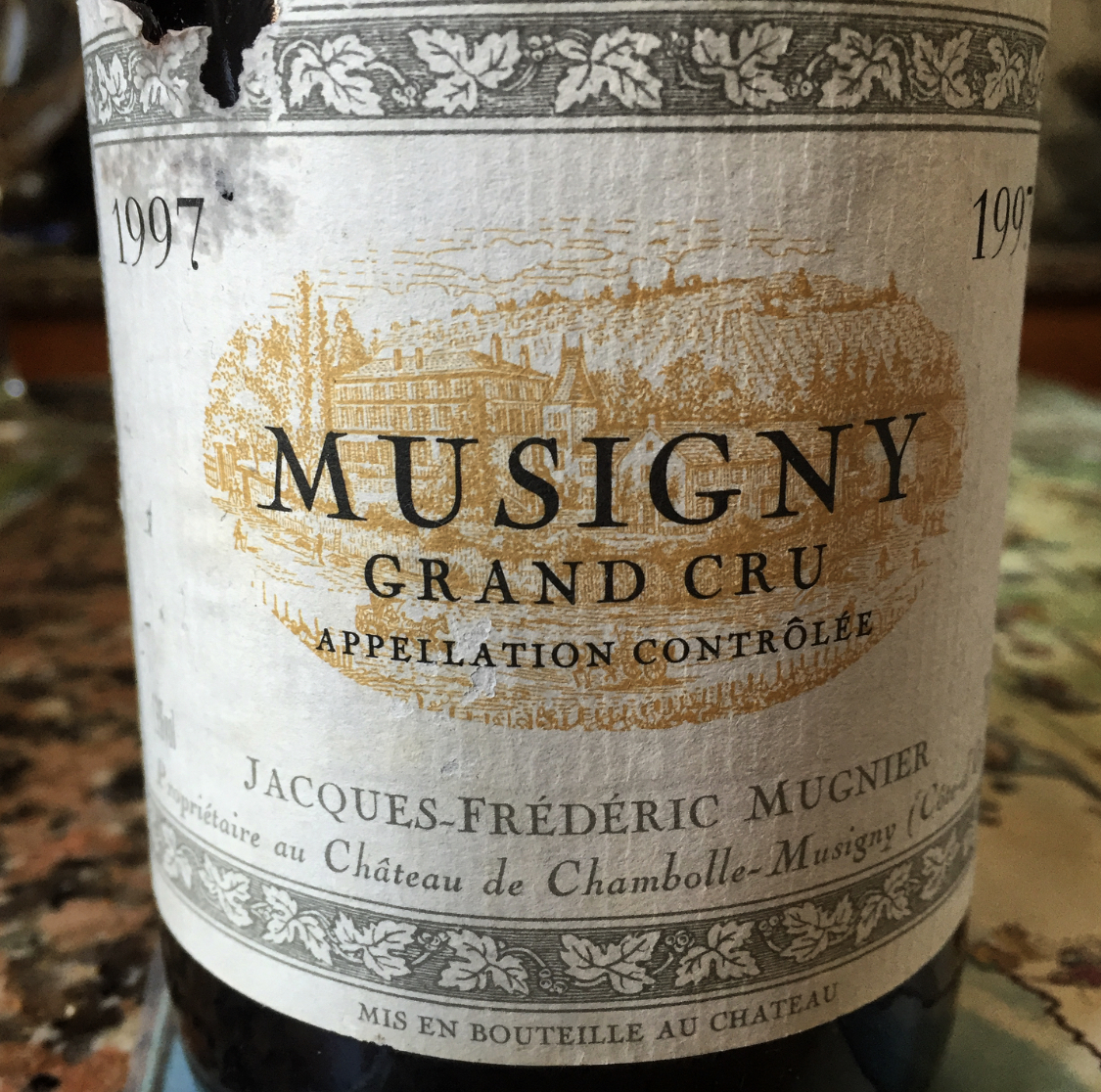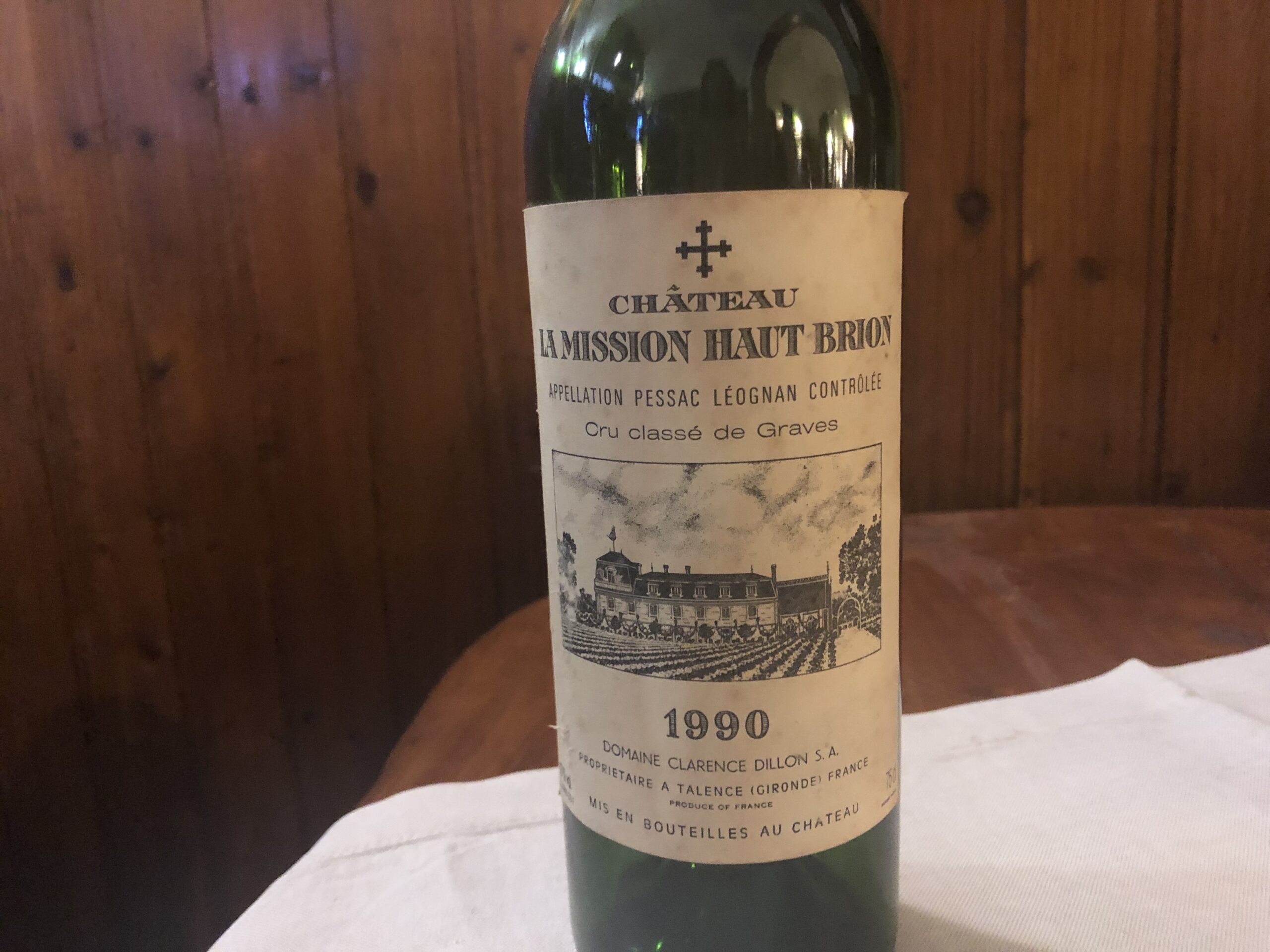Domaine Jacques-Frédéric Mugnier 1997 Musigny Grand Cru 95

Musigny is one of the world’s ten most famous vineyards and its wines some of the greatest you, I, and everybody else will be lucky to taste in our lifetimes. That said, it’s an extraordinarily difficult wine to taste at precisely the right point in time: drink it too soon and the luscious fruit is somewhat dumbed down by steely tannic framework, drink it too late and you lose the unbelievable charm and unforgettable fruitiness this magical site cane exude in spades. Don’t get me wrong: when well-made, Musigny is always one of the world’s greatest red wines, it’s just that many times one comes away thinking, as crazy as it might be, that there might have been even more to the drinking experience to be had. This is because the wines of Musigny combine, like no other Pinot Noir vineyard plot on earth, an unbelievable sumptuous fruitiness but also an underlying steely density that can leave an impression of firmness. The latter isn’t totally typical of Chambolle-Musigny’s many great other wines, such as those for example issued from the great premier crus sites such as Les Amoureuses, and that’s probably why Musigny is a grand cru.
Musigny overlooks Les Amoureuses and Clos de Vougeot, but it’s soil changes throughout, for example the upper slope is characterized by a subsoil made of marl and eolithic limestone while lower down its the much less porous but mercifully fissured Comblanchien stone that takes over (and begins to resemble somewhat more the soil of Les Amoureuses). In general, there is much less chalk and magnesium and more clay than in nearby Morey’s best sites, for example. All these characteristics are important because they bless Musigny with at once excellent drainage but also good water retention capacity (especially in its upper part) that comes in handy in warmer years such as 1997.
Jacques-Frédéric Mugnier is also one of my favourite Burgundy producers having tasted nothing but great wines from him over the years, so I for one am glad he decided to give up his day job as an airline pilot now many years ago. In fact, the estate had long rented out its vines in Chambolle, to Faiveley until 1977 and to Bruno Clair until 1984, but with the advent of Jean-Frédéric in 1985, things changed. A good thing too, given that at roughly 1.14 hectares, he is the second biggest owner of Musigny’s hallowed ground (behind De Vogué). Mugnier’s portion of Musigny is located in Les Grand Musigny section of the grand cru, most of which belongs to De Vogué. Even better, Mugnier’s vines are extremely old, having been planted between 1948 and 1962, save for roughly 15% of the vines that were replanted in 1977 (in 1989, Mugnier tried his hand at making a très vieilles vignes cuvée of the 1948 vines only, but found the two resulting wines less than the blend of the two, and so that was not repeated).
The Jacques-Frédéric Mugnier 1997 Musigny is a beautiful wine that showcases the effects of a warmer year as well as the greatness of a site and why it’s a grand cru. Very pretty deep red in colour, the nose literally explodes from the glass with captivating aromas of ripe red and blue fruit, licorice, flinty minerals and aromatic herbs. Superbly elegant in the mouth, with a luscious connotation to the red cherry and blueberry flavours, it finishes with inky nuances and stony echoes that linger nicely on the suave long, slightly smoky finish. I especially liked this wine’s balance, and that, aside from the fact that it’s certainly a bigger, fleshier wine than usual, there’s not much else here that gives away the fact this beauty was made in a relatively warmer year. Well done. Drinking window: now- 2032.
La Mission Haut-Brion 1990 Chateau La Mission Haut-Brion 95

Chateau La Mission Haut-Brion is one of my favorite Bordeaux properties and wines. Known already in the 16th century, it belonged at one time to Jean de Pontac who bought it in 1533 (he later became the owner of Chateau Haut-Brion as well: some guys have all the luck!). The estate was long owned by an American family, the Woltners (who bought it in 1919) but sold it in 1983 to the owners of Haut-Brion, thereby reuniting the two estates under the same ownership. Roughly 30.7 hectares are under vine, twenty-seven of which are planted to red grapes (about 46% Cabernet Sauvignon, 44% Merlot and 10% Cabernet Franc. The La Mission Haut-Brion 1990 Chateau La Mission Haut-Brion is an absolutely smashing wine: one taste and you immediately realize that you are in the presence of greatness. Deep ruby-red with noteworthy brilliance, it shimmers in the glass. The enticing nose offers precise, intense notes, of blueberry, cassis, old leather, chestnuts, cèpes and morels, complicated by the typical smoky, leafy and gravely nuances of Pessac-Léognan. Very deep and powerful in the moth, but with an underlying elegance to its flavours of cassis and game that is truly remarkable. Very suave and drinking beautifully now, the 1990 La Mission is one of the more successful wines of that very good, even excellent vintage that was perhaps just a little overrated at the outset. Drinking window: now-2030.

 中文
中文



